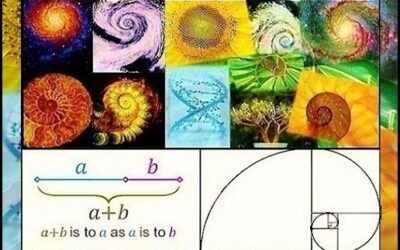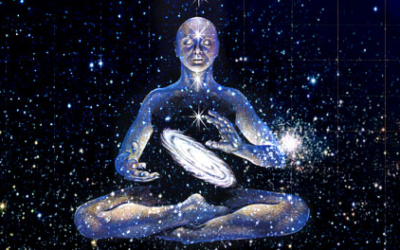
- Are all the (measurable) dimensionless parameters that characterize the physical universe calculable in principle or are some merely determined by historical or quantum mechanical accident and uncalculable? Einstein put it more crisply: did God have a choice in creating the universe? Imagine the Old One sitting at his control console, preparing to set off the Big Bang. “How fast should I set the speed of light?” “How much charge should I give this little speck called an electron?” “What value should I give to Planck’s constant, the parameter that determines the size of the tiny packets — the quanta — in which energy shall be parceled?” Was he randomly dashing off numbers to meet a deadline? Or do the values have to be what they are because of a deep, hidden logic? These kinds of questions come to a point with a conundrum involving a mysterious number called alpha. If you square the charge of the electron and then divide it by the speed of light times Planck’s constant, all the dimensions (mass, time and distance) cancel out, yielding a so-called “pure number” — alpha, which is just slightly over 1/137. But why is it not precisely 1/137 or some other value entirely? Physicists and even mystics have tried in vain to explain why.
- How can quantum gravity help explain the origin of the universe? Two of the great theories of modern physics are the standard model, which uses quantum mechanics to describe the subatomic particles and the forces they obey, and general relativity, the theory of gravity. Physicists have long hoped that merging the two into a “theory of everything” — quantum gravity — would yield a deeper understanding of the universe, including how it spontaneously popped into existence with the Big Bang. The leading candidate for this merger is superstring theory, or M theory, as the latest, souped-up version is called (with the M standing for “magic,” “mystery,” or “mother of all theories”).
- What is the lifetime of the proton and how do we understand it? It used to be considered gospel that protons, unlike, say, neutrons, live forever, never decaying into smaller pieces. Then in the 1970’s, theorists realized that their candidates for a grand unified theory, merging all the forces except gravity, implied that protons must be unstable. Wait long enough and, very occasionally, one should break down. The trick is to catch it in the act. Sitting in underground laboratories, shielded from cosmic rays and other disturbances, experimenters have whiled away the years watching large tanks of water, waiting for a proton inside one of the atoms to give up the ghost. So far the fatality rate is zero, meaning that either protons are perfectly stable or their lifetime is enormous — an estimated billion trillion trillion years or more.
- Is nature supersymmetric, and if so, how is supersymmetry broken? Many physicists believe that unifying all the forces, including gravity, into a single theory would require showing that two very different kinds of particles are actually intimately related, a phenomenon called supersymmetry. The first, fermions, are loosely described as the building blocks of matter, like protons, electrons and neutrons. They clump together to make stuff. The others, the bosons, are the particles that carry forces, like photons, conveyors of light. With supersymmetry, every fermion would have a boson twin, and vice versa. Physicists, with their compulsion for coining funny names, call the so-called superpartners “sparticles”: For the electron, there would be the selectron; for the photon, the photino. But since the sparticles have not been observed in nature, physicists would also have to explain why, in the jargon, the symmetry is “broken”: the mathematical perfection that existed at the moment of creation was knocked out of kilter as the universe cooled and congealed into its present lopsided state.
- Why does the universe appear to have one time and three space dimensions? “Just because” is not considered an acceptable answer. And just because people can’t imagine moving in extra directions, beyond up-and-down, left-and-right, and back-and-forth, doesn’t mean that the universe had to be designed that way. According to superstring theory, in fact, there must be six more spatial dimensions, each one curled up too tiny to detect. If the theory is right, then why did only three of them unfurl, leaving us with this comparatively claustrophobic dominion?
- Why does the cosmological constant have the value that it has? Is it zero and is it really constant? Until recently cosmologists thought the universe was expanding at a steady clip. But recent observations indicate that the expansion may be getting faster and faster. This slight acceleration is described by a number called the cosmological constant. Whether the constant turns out to be zero, as earlier believed, or some very tiny number, physicists are at a loss to explain why. According to some fundamental calculations, it should be huge — some 1010 to 10122 times as big as has been observed. The universe, in other words, should be ballooning in leaps and bounds. Since it is not, there must be some mechanism suppressing the effect. If the universe were perfectly supersymmetric, the cosmological constant would become canceled out entirely. But since the symmetry, if it exists at all, appears to be broken, the constant would still remain far too large. Things would get even more confusing if the constant turned out to vary over time.
- What are the fundamental degrees of freedom of M-theory (the theory whose low-energy limit is eleven-dimensional supergravity and that subsumes the five consistent superstring theories) and does the theory describe nature? For years, one big strike against superstring theory was that there were five versions. Which, if any, described the universe? The rivals have been recently reconciled into an overarching 11-dimensional framework called M theory, but only by introducing complications. Before M theory, all the subatomic particles were said to be made from tiny superstrings. M theory adds to the subatomic mix even weirder objects called “branes” — like membranes but with as many as nine dimensions. The question now is, Which is more fundamental — are strings made from branes or vice versa? Or is there something else even more basic that no one has thought of yet? Finally, is any of this real, or is M theory just a fascinating mind game?
- What is the resolution of the black hole information paradox? According to quantum theory, information — whether it describes the velocity of a particle or the precise manner in which ink marks or pixels are arranged on a document — cannot disappear from the universe. But the physicists Kip Thorne, John Preskill and Stephen Hawking have a standing bet: what would happen if you dropped a copy of the Encyclopaedia Britannica down a black hole? It does not matter whether there are other identical copies elsewhere in the cosmos. As defined in physics, information is not the same as meaning, but simply refers to the binary digits, or some other code, used to precisely describe an object or pattern. So it seems that the information in those particular books would be swallowed up and gone forever. And that is supposed to be impossible. Dr. Hawking and Dr. Thorne believe the information would indeed disappear and that quantum mechanics will just have to deal with it. Dr. Preskill speculates that the information doesn’t really vanish: it may be displayed somehow on the surface of the black hole, as on a cosmic movie screen.
- What physics explains the enormous disparity between the gravitational scale and the typical mass scale of the elementary particles? In other words, why is gravity so much weaker than the other forces, like electromagnetism? A magnet can pick up a paper clip even though the gravity of the whole earth is pulling back on the other end. According to one recent proposal, gravity is actually much stronger. It just seems weak because most of it is trapped in one of those extra dimensions. If its full force could be tapped using high-powered particle accelerators, it might be possible to create miniature black holes. Though seemingly of interest to the solid waste disposal industry, the black holes would probably evaporate almost as soon as they were formed.
- Can we quantitatively understand quark and gluon confinement in quantum chromodynamics and the existence of a mass gap? Quantum chromodynamics, or QCD, is the theory describing the strong nuclear force. Carried by gluons, it binds quarks into particles like protons and neutrons. According to the theory, the tiny subparticles are permanently confined. You can’t pull a quark or a gluon from a proton because the strong force gets stronger with distance and snaps them right back inside. But physicists have yet to prove conclusively that quarks and gluons can never escape. When they try to do so, the calculations go haywire. And they cannot explain why all particles that feel the strong force must have at least a tiny amount of mass, why it cannot be zero. Some hope to find an answer in M theory, maybe one that would also throw more light on the nature of gravity.
- (Question added in translation). Why is any of this important? In presenting his own list of mysteries, Hilbert put it this way: “It is by the solution of problems that the investigator tests the temper of his steel; he finds new methods and new outlooks, and gains a wider and freer horizon.” And in physics, the horizon is no less than a theory that finally makes sense of the universe.



